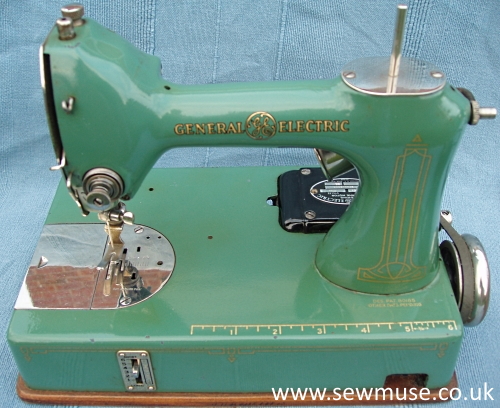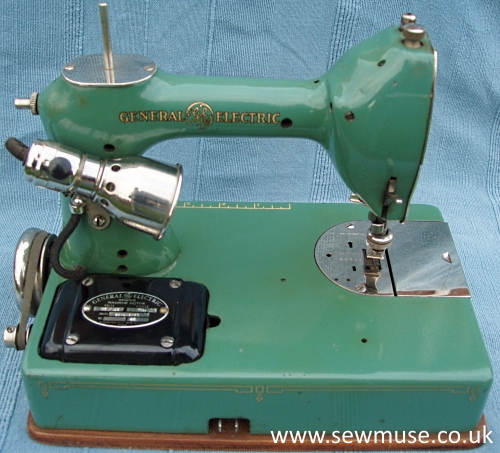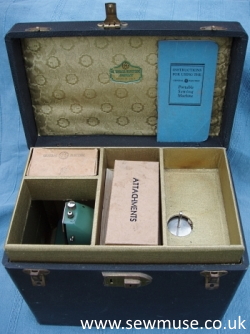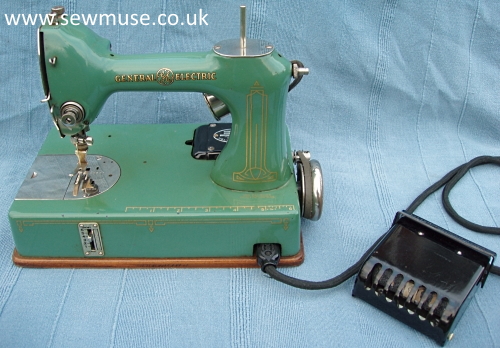The Standard Sewing Machine Co., Cleveland, Ohio. was originally incorporated in 1880 as the Teller Manufacturing Co. but changed its name to the Standard Sewing Machine Co. in 1884.
In 1929 the Company became a subsiduary of Fredrick Osann Co. although it continued to operate as a separate company and 1934 Frederick Osann Co was taken over by the Singer Manufacturing Co.

General Electric: Serial No. 16980.
In 1928 the Standard Sewing Machine Company was licensed by the Frederick Osann Co. to produce the Sewhandy sewing machine and when, in 1929, the Standard Sewing Machine Co. became a subsiduary of Fredrick Osann Co. production of the Sewhandy continued.
The Sewhandy was a lightweight machine weighing only 12 lbs. Designed by Richard K. Hohmann it had an aluminium bed with the electrical components being supplied by General Electric. The machine was available in a range of colours including a version labelled specifically for General Electric.
It appears there were distribution problems and in 1931 after around 7,500 machines had been produced the Standard Sewing Machine Co. and General Electric agreed that no further machines would be produced under the Sewhandy name. Instead 5,000 machines were to be manufactured for General Electric during a three month period ending September 1931. They were of an agreed design which included a revised faceplate with the GE logo and were to be marketed solely through General Electric's dealer network.
The agreement between Standard Sewing Machine Co and General Electric must have suited both companies as the machine continued to be sold under the General Electric name until 1934. During that time only minor changes were made to the machine except in 1932 when the bed was changed to cast iron resulting in an increase in weight to 15.75 lbs.
When the Singer Manufacturing Co aquired the Fredrick Osann Co. in 1934 it set up a separate company - the Ossan Corporation which produced the machine as the Sewhandy until 1938. Later Singer used the Sewhandy name for its toy sewing machines.




This example was produced around 1932 and was sold in France which like the USA uses 110 volts power supply. The machine came complete with case with its cleverly designed tray to hold its accessories along with manuals in both English and French.
The serial number is on a plate within the bobbin area and also, as this is a later model, on the stitch length adjuster.




